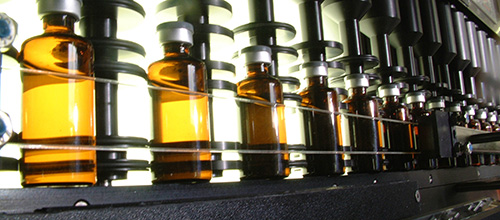Questions and Answers on the Topic "Visual Inspection"
Recommendation

Thursday, 12 February 2026 9 .00 - 17.00 h
On the topic of visual inspection of parenterals there are always questions on how to implement in practice. The following Q&As are supposed to support you in this implementation.
Question 1: How often have employees of the manual (or semi-automatic) inspection have to be trained? What does "regularly" mean in this context?
With regard to visual inspection, the difference between initial qualification and requalification must basically be made. Strictly speaking, requalification is an examination of the stand of a person's qualification. It is recommended to re-qualify employees every 3 to 6 months.
Question 2: The grey portion of fully automatic control is often checked manually, to return not clearly or fully tested products back to the inspection process. Is it allowed to carry out this testing with the automated inspection machine?
From a GMP view, there are no restrictions. It is also important here that at the end a yield calculation and evaluation in the batch record appears. And there are also automated inspection systems that have already integrated the double inspection with multiple cameras.
Question 3: Is AQL testing mandatory as a part of the visual inspection?
A direct requirement cannot be derived from the EU GMP. Yet, the AQL tests correspond to the state of the art in science and technology. Since we know that neither man nor machine can prevent particles in the containers for being overlooked up to 100%, an additional measure - like the AQL tests - is certainly appropriate. Another method would be of course a second 100% control. Or you could show in the validation that the test method 100% succeeds, what will hardly be possible in practice.
Question 4: Are there legal acceptance criteria or provisions regarding the size of (visible) particles?
According to studies by Jules Knapp, people can recognise particles under optimal conditions from 30 - 50 µm, taking into account the colour of the particle. Other studies have shown that eventually particles from approximately 200 µm can be surely detected - in other sources, values of 50-80 µm can be found. There are (still) no statutory limits on the size of the visible particles.
Question 5: Can one 'reject' test be considered as a good after two "good" inspection on the same machine?
This is possible in a few cases where - for example - the machine stopped and goods were therefore ejected. Otherwise, "reject" should always remain "reject". This is particularly applicable to "bad" goods which have been rejected because of particles or opacity. Containers sorted out due to cosmetic defects are however usually being re-inspected.
Question 6: Are there empirical values about how long do lamps in semi-automatic testing stations keep their intensity?
Here, the certificates of the lamp manufacturers should be consulted. As a rule, 2-3 years are indicated. Frequently, the lamps will be exchanged routinely after one year to never have to question the test results due to possible lamp weakness retroactively.




